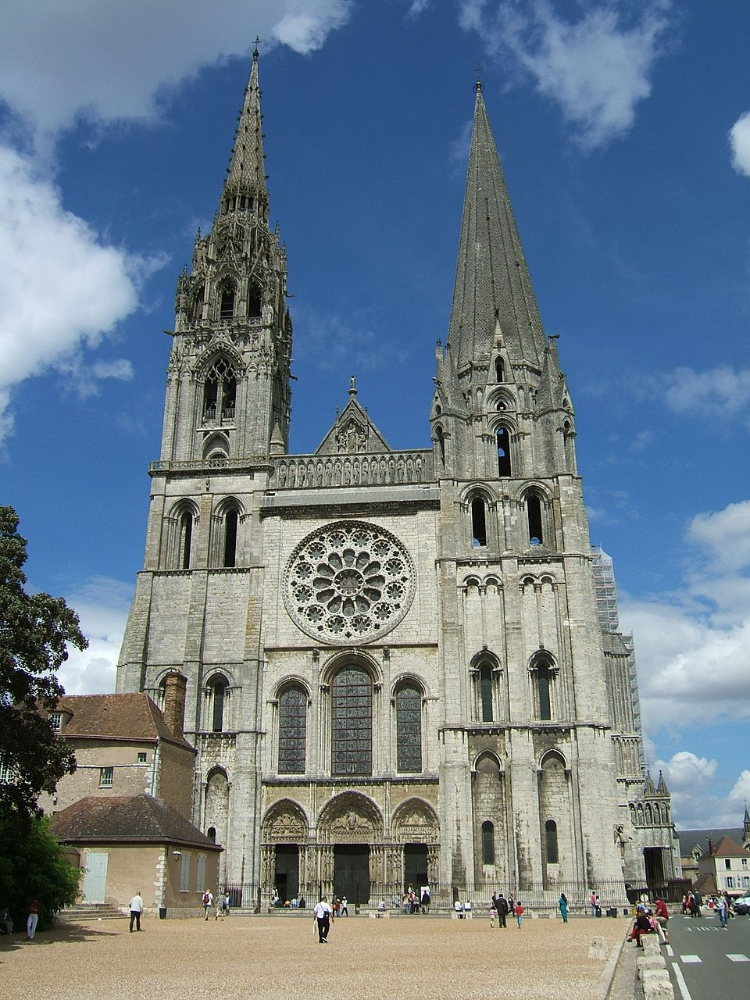Chartres Cathedral

Chartres Cathedral
Chartres Cathedral is a quintessential example of Gothic architecture. Well, sort of. The current cathedral - built after a fire destroyed most of the previous structure - started construction in 1194, during the early Gothic period and was completed a scant 26 years later. Unless, of course, you count the intricate north tower, completed during the High Gothic period in 1513, a mere 300 years later.
Though it's not the original source for many of the elements associated with Gothic architecture, it incorporates nearly all of them, from the flying buttress to the pointed arch. The west facade (pictured) is a great example. It incorporates the round arches of its Romanesque beginnings, houses shallow pointed portals at the cathedral entrance representing early Gothic concepts, and is literally topped off with the intricate carvings of the high Gothic north tower.
Pilgrim's Progress
Though not exclusive to Chartres, medieval cathedrals were constructed with an arcade (a covered series of arches) lining the nave (the central section of the church) and connecting to a walkway that curved behind the altar.
Why?
Well, apparently, relic tourism was a popular pastime in the early 1000s. Cathedrals housed sacred relics - in the case of Chartres, the relic is a tunic worn by Mary during the birth of Jesus, and pilgrims would walk through the cathedral to admire the relic and the local architecture - even while mass was in progress.
In order to accommodate the travelling faithful without disturbing the praying faithful, architects created ambulatories to allow the pilgrims to shuffle by unfettered to ooh and awe at the church's wonders.
Mary's tunic is still in residence today, but is only available in one size, and the display model is not for sale.
That's the point
Prior to Gothic architecture, there was Romanesque architecture. Romanesque architecture is primarily characterized by rounded arches, thick walls, and claustrophobic interiors. Then, along came the pointed arch to set off the Gothic style and change the dress code for emo kids for the next 8 centuries and counting.
By adding a simple point to the top of the arch, architects redirected the thrust of the building force downward, rather than outward. This eliminated the need to use thick walls to support the weight of the building.
As a result, the building could now incorporate larger clerestory windows (the large windows lining the sides of the cathedral), flooding the interior with light and opening up more creative options via the use of stained glass.
